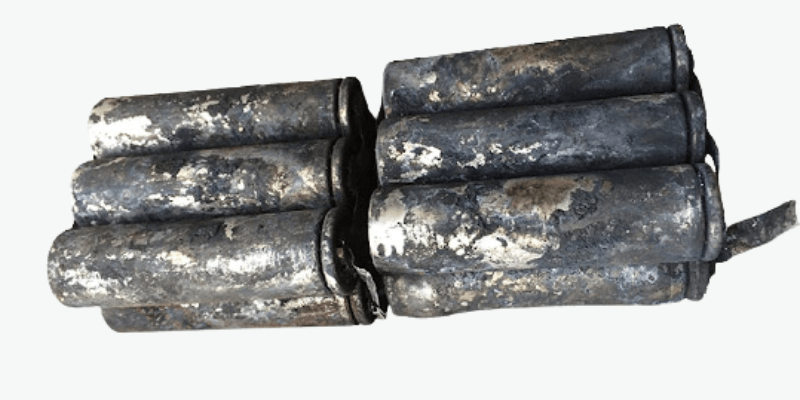Key Takeaway:
- Explore the guide to lithium-ion battery failure, covering charger issues, short circuits, punctures, swelling, and overheating, with tips for prevention and safe handling.
Is your custom lithium battery underperforming? Today, let’s explore the causes of battery pack failures and learn how to prevent them.
Charger Issues
Using the wrong charger can cause issues like overcharging and swelling in lithium battery packs.
Chargers are designed to prevent overcharging, but the wrong charger can cause this issue.
Lithium battery packs should never be charged below 32°F. It can lead to permanent lithium plating on the anode, making the battery more susceptible to damage.
Over-discharge is as much a concern as overcharging for lithium-ion batteries.
The voltage should never fall below 2 volts, because the anode and cathode will break down.
When recharged above 2 volts, the anode current collector will dissolve, and copper ions can precipitate, causing short circuits. The cathode also releases oxygen, leading to permanent capacity loss.
Cell Short Circuit
Lithium battery fires often stem from metallic particle contacts inside the battery that cause short circuits.
While minor shorts only lead to self-discharge, major shorts can trigger thermal runaway, where heat corrodes the insulation and causes combustion. This issue is typically caused by manufacturing problems that allow metallic dust to accumulate.
To prevent these failures, improving quality control and using clean rooms to reduce dust generation can be done.
Puncture and Leakage
End users can experience punctures and leakage in lithium battery packs during shipping, transportation, and handling.
Punctures will happen when the electrolyte leaks out of contact with sharp objects, drops, or other mechanical stresses. The amount of leakage varies depending on the battery pack size and the punctured cell numbers.
Punctures and leakage can be dangerous. Users should take precautions to avoid contact with leaking electrolytes, as they can short-circuit nearby electronics.
Battery Pack Swelling
The battery enclosure may be bulging due to lithium battery swelling. This can happen for several reasons, such as moisture intrusion, overcharging, or aging.
As the battery ages, it can cause temperatures elevating.
To prevent battery swelling, avoid exposing the pack to moisture and limit constant charging.
Heating Issues
Overheating is a common lithium battery failure, which generally led by by overcharging or high temperatures.
Thermal runaway is another issue that can affect lithium-ion batteries, where the electrolyte and cathode break down because of excessive internal temperature and pressure. It will result in gas accumulation and the risk of ignition or explosion.
Battery management systems (BMS) are designed to prevent thermal runaway by monitoring and regulating factors like overcharging, overvoltage, and temperature. The BMS ensures the battery operates within safe limits and can store diagnostic information to help troubleshoot issues.
What to Do When Your Battery Pack Fails
The BMS prevents most battery pack issues. Other problems like shorts or aging simply cause the battery to stop working.
It should be aware of dangers like leakage and thermal runaway. If there’s leakage, place the lithium-ion battery in a sealable bag and clean up the electrolyte with lemon juice or vinegar.
During failures, the pack may hiss, vent gases, ignite, or explode. Treat it like a regular fire, using a foam extinguisher, sodium carbonate, or water.
If a lithium battery has swelled, remove it from the device and contact the manufacturer for returning or properly disposing of it.
Conclusion
In summary, the top causes of lithium-ion battery failure include charger issues, cell short circuits, punctures and leakage, battery pack swelling, and overheating. Proper charger usage, quality control, and battery management systems are crucial to prevent these failures.
When a lithium-ion battery pack does fail, it’s important to handle it safely by containing any leaks and disposing of the battery properly.
Related Articles:

